Imagine combining the spicy zing of your favorite Tobasco sauce with the complex flavors and live-culture, probiotic goodness of a lactic acid ferment. You get this amazing homemade hot sauce that we make at the end of summer and enjoy it all winter long!
How to Make Homemade Hot Sauce
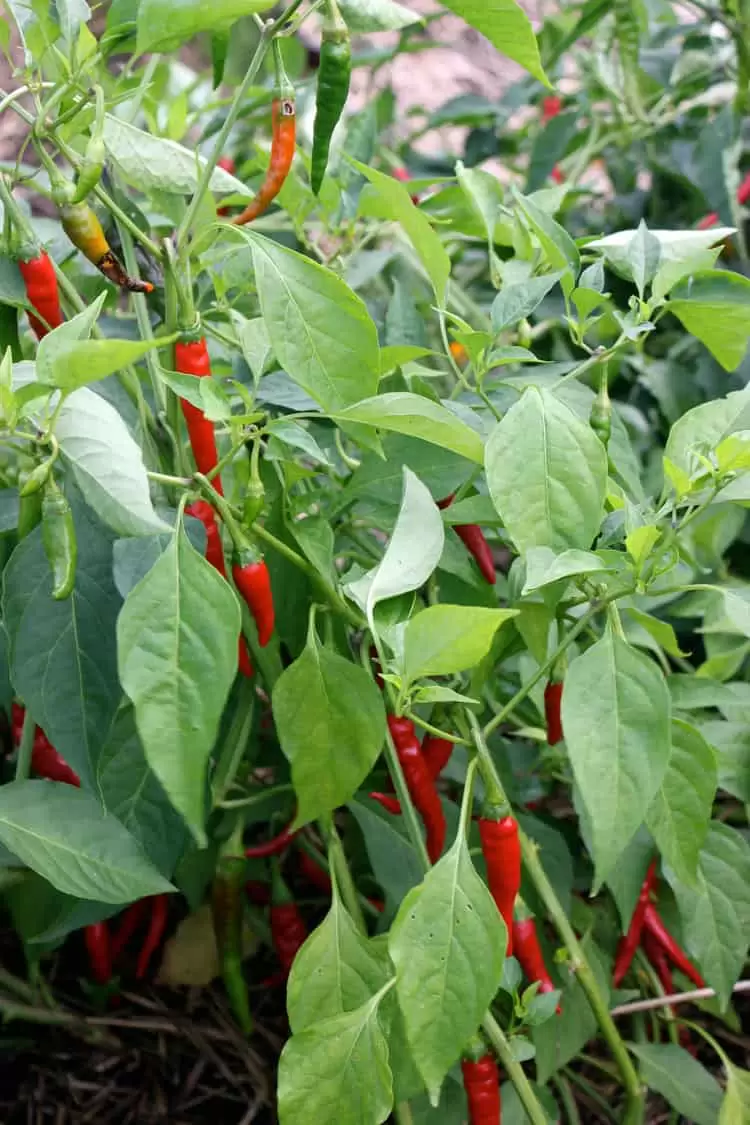
How to Make Homemade Hot Sauce
Step 1: Start with ripe, fresh chiles.
The first step to making your own fiery and delicious fermented homemade hot sauce is to gather some chili peppers. Either homegrown peppers or from a farmer’s market work wonderfully!
These are long thin cayenne peppers mixed with a few yellow hot peppers, but you could also use green chiles like serranos or jalapenos for a green homemade hot sauce.
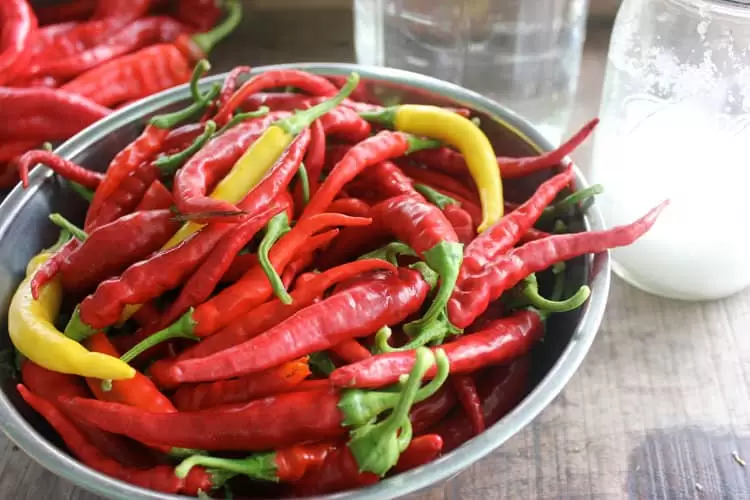
Step 2: Cut off the stems and chop the peppers into a couple of pieces, and loosely pack them into a mason jar. You may wish to de-seed some of the peppers to reduce the heat and potential bitterness.
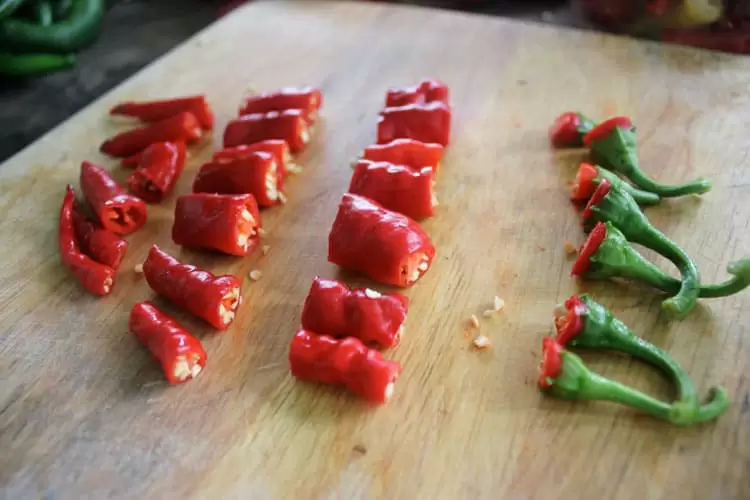
Step 3: Mix a 5% brine (3 TBSP salt per quart of water) in another container.
Pour the brine over the chiles and cover with a cloth or a lid that is left slightly open so the pressure can release during the fermentation process.
The technique is exactly like making naturally fermented pickles.
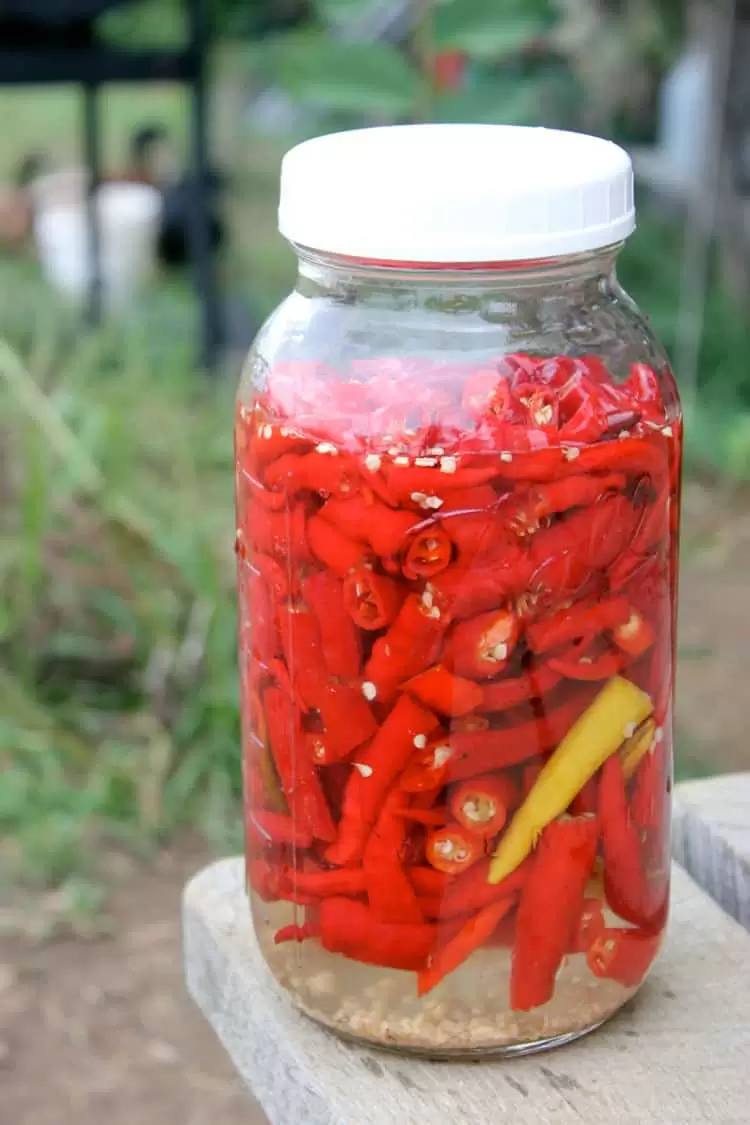
Step 4: Let the hot sauce ferment.
I like to keep this jar on my counter where I will see it every day and remember to invert the jar 1 or 2 times per day to keep mold from forming on the surface.
Alternatively, you could weigh down the peppers with a glass weight designed especially for fermenting.
After a week or two, the liquid should be cloudy. This is a sign of lactic acid bacteria proliferating. At this point, the ferment should taste delightfully sour and tart.
Now we’re ready to blend the peppers into your lacto-fermented hot sauce!
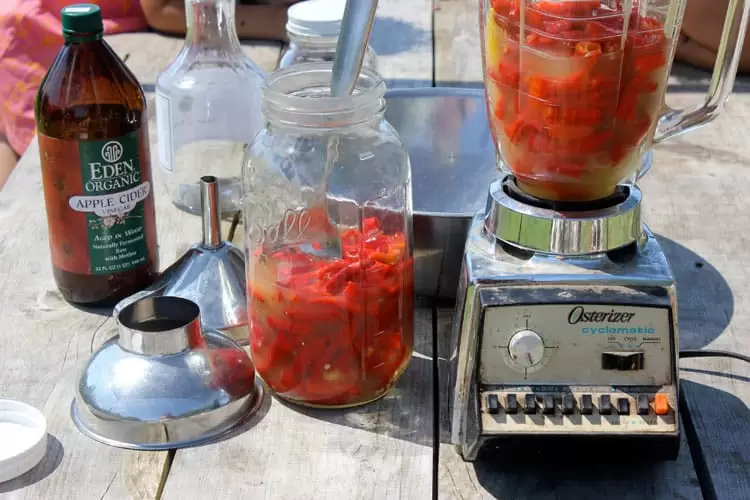
Step 5: Finish the homemade hot sauce!
Carefully blend the chiles and brine into a velvety red puree.
You might not need to add ALL the brine – start with a small amount and add to your desired consistency. Use more for a liquidy, Tobasco-like sauce, and less for a thicker paste-like hot sauce.
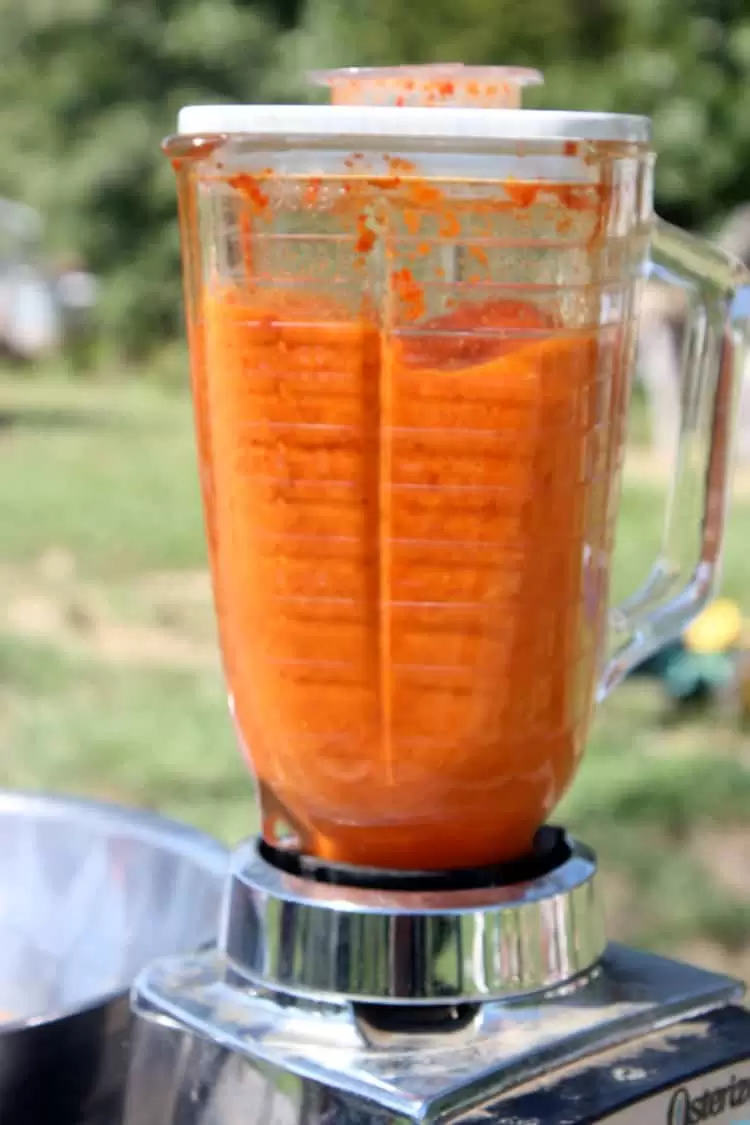
Step 6: Add optional apple cider vinegar.
We usually add a few drizzles of apple cider vinegar to increase the acidity, which helps the fermented hot sauce keep longer.
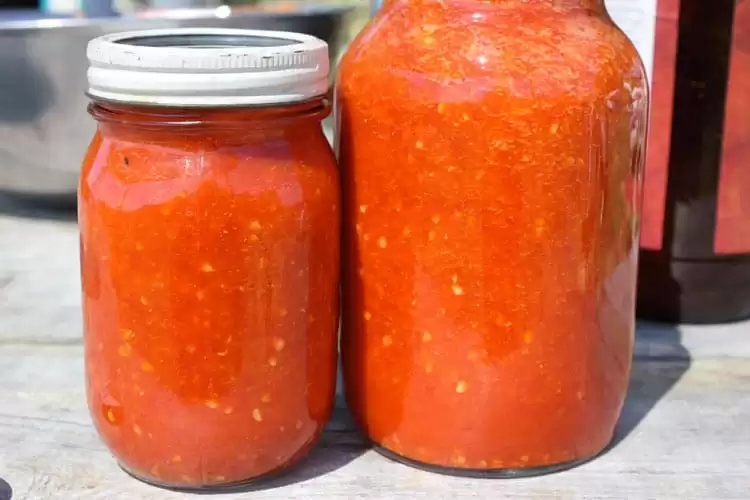
Store your homemade lacto-fermented hot sauce in a cool or refrigerated place, and enjoy a bit of summer heat all year long!
More fermented recipes you might be interested in:
- Wildflower Kombucha
- Fermented Honey w/ Red Onions & Thyme
- Dandelion Soda Recipe
- Lacto-Fermented Radishes
- Fire Roasted Jalapeno Hot Sauce
Homemade Lactofermented Hot Sauce
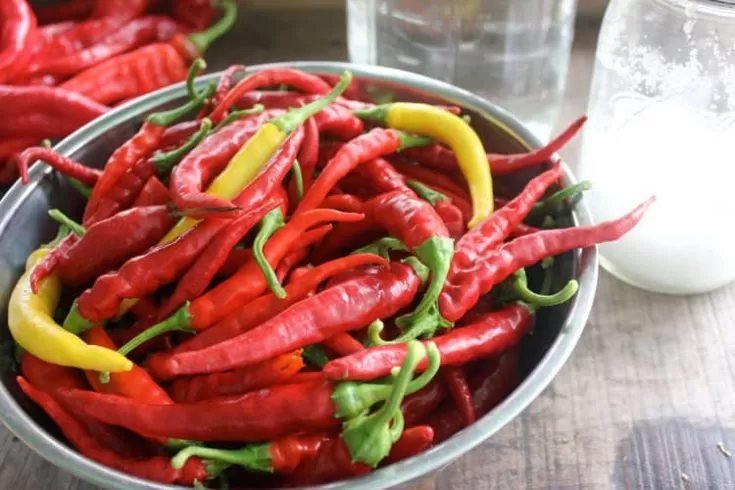
This homemade lactofermented hot sauce will add a deliciously spicy kick to any meal!
Ingredients
- Hot peppers (a mix of jalapeños, cayenne or any of your favorite hot peppers)
- Salt
- Water
Instructions
- De-stem and chop ripe hot peppers into a couple of pieces, and loosely pack them into a mason jar. You may wish to de-seed some of the peppers to reduce the heat and potential bitterness.
- Mix a 5% brine (3 TBSP salt per quart of water) in another container.
- Pour the brine over the chiles and cover with a cloth or a lid that is left slightly open so the pressure can release during the fermentation process.
- Place the jar on a counter in a room temperature location to ferment.
- Invert the jar 1 or 2 times per day to keep mold from forming on the surface. Alternatively, you could weigh down the peppers with a glass weight designed especially for fermenting.
- After a week or two, the liquid should be cloudy. This is a sign of lactic acid bacteria proliferating. At this point, the ferment should taste delightfully sour and tart.
- Blend the hot peppers and some brine into a puree.
You might not need to add ALL the brine – start with a small amount and add to your desired consistency.
Notes
Use more brine for a liquidy, Tobasco-like sauce, and less for a thicker paste-like hot sauce.
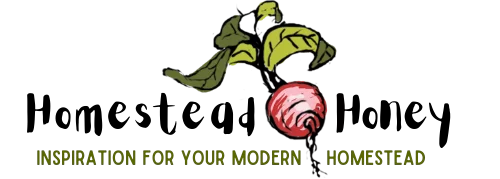
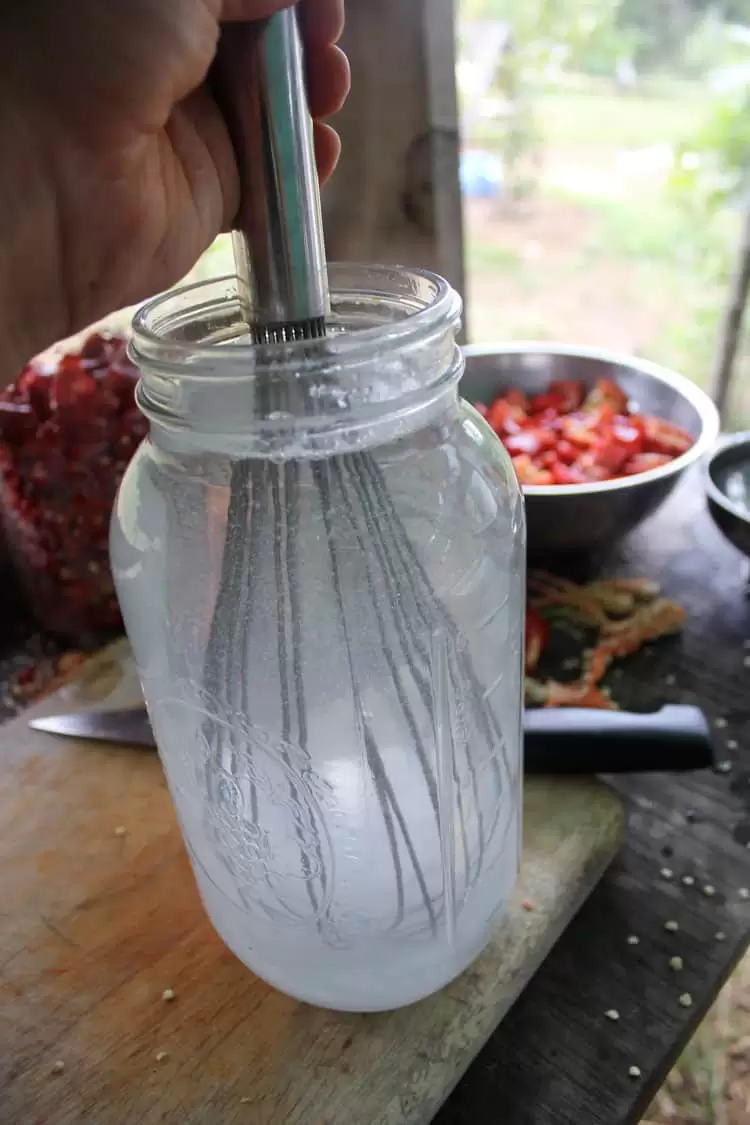
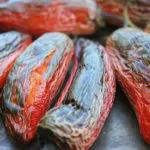
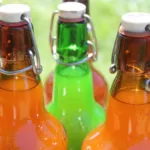
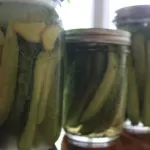
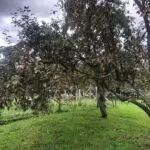
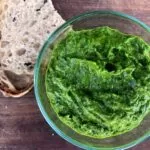
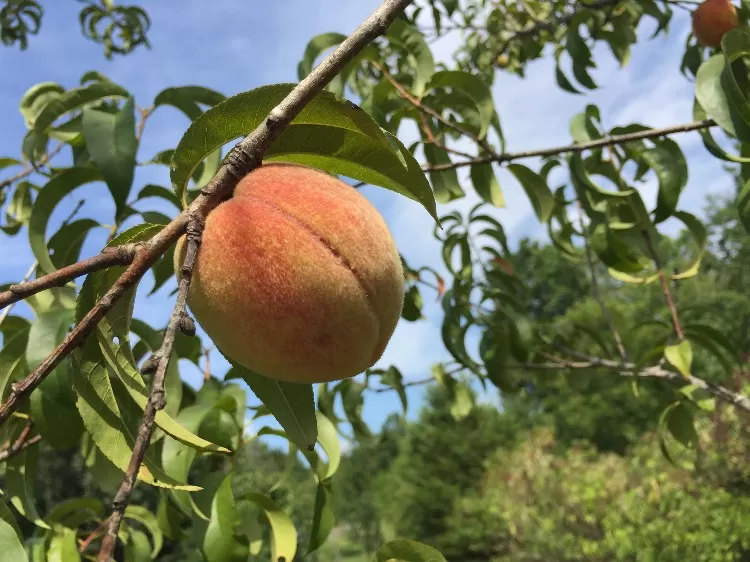


would love for you to make it possible to print recipe
Hi Chris, for some reason this post had slipped by without a recipe card. I just added it, so you can now scroll down to the bottom of the blog post and find a recipe card with a print option.
Thanks for bringing that to my attention!
Hi,
I’d like to Thank you for this delicious homemade recipe, I’ve tried it couple of times so far and all went well 🙂
I’m not sure why this time though I tried to stick to your instructions , but when I’m about to open The jar to blend the content (after 2 weeks now) I got surprised with the amount of fizziness!!! Is that a bad sign??
Please advise
Thanks
The lactofermentation process will generate gas (fizziness), which is why it’s so important to either leave the lid slightly ajar, to use an airlock, or some other method of letting that gas escape so your glass jar does not explode. But otherwise, very normal to have some amount of bubbling.
I would like to know about your bread and pizza oven who build for you and how much it cost? thanks and hope received your email:almas.nathoo@yahoo.com
thanks
almas
We made our bread and pizza oven for under $200, and we built it ourself. We wrote an eBook about the process so others could build their own oven with our design. You can find the book here: https://homestead-honey.com/backyard-bread-pizza-oven-ebook/
Teri,
Jeff and I still talk about this hot sauce at least once a month. Well, truthfully, we talk about everything we experienced on that trip all the time. But we especially can’t wait to try our hands at this hot sauce. Thanks for posting the recipe! Oh, and tell Brian that he gave Jeff the bread making bug (I’m glad one of us caught a good bug)! He’s been making rolls and buns, and is going to start making pizza dough this weekend.
Oh, that’s great! I’ll be sure to tell Brian. We’re still enjoying the hot sauce from last year and about to make some more!
Thank you I love chiptole tobasco but its hard to find
Thanks for this recipe. We did this last year. I made two different batches, in half gallon jars, one with hotter peppers and one with milder ones. I ended up straining the seeds out of the hotter one and put it in the old Tobasco jar, mostly for my husband. We will do this again but we still have so much we might not need it until next year lol !
Deanna
We still have two quart jars of fermented peppers left from last year as well!! Glad you enjoyed it!
I have a batch of this started. I suppose I forgot about turning the jar upside down 1 or 2 times a day. Mold has formed on top. I scoop off all I can but in a short period of time it is back. Do I consider this batch ruined It does not have a foul odor.
It should be fine, as long as it’s white mold, and not funky colors or funky smells. A few thoughts: 1) maybe mold spores are in your jar, so switch to a clean jar/lid. 2) Top off the jar with more brine to make sure it’s really full! 3) Add a bit more salt, or even a splash of vinegar to the solution. Good luck!
Could I put garlic cloves in with the peppers….
Absolutely! That would taste great!
Good stuff. I do much the same, but blend with a mixture of vinegar and garlic for something more akin to sriracha.
Sounds delicious!
The primary reason ancient people drank fermented beverages, rather than plain water, was because nothing that can harm you survives in a fermented beverage. Granted, different wild yeasts and bacteria can cause different, (sometimes undesirable), flavors, but the end result is not harmful to your health, even if it tastes gross.
The same will hold true for fermented hot sauce with vinegar added. Your best bet for long term storage, (should you make enough), is to can the finished product. If vinegar is used, water bath canning will be sufficient, if no vinegar is used, pressure canning would be the way to go. Thirty five minutes, using either method.
I’m just starting to learn how to garden, and so far chilis have been my favorite to grow. I’m definitely going to have to try this (when I learn to grow the plants properly–so far they remain small and only grow a few chilis at a time, so I don’t have enough to work with….but the habaneros, though small, have been absolutely delicious!)
I find that my peppers grow best in nice rich soil, and of course they need a lot of sun. Good luck growing them!
I have an abundance of hot peppers (chilis); definitely going to try this. Thanks for sharing.
I was curious to mine a little more of your experience…
How long will this sauce typically keep if refrigerated?
If you’ve ever had a batch “go bad”, what are the telltale signs?
Thanks for the post!
The obvious sign of a ferment gone bad would be surface mold. You can scrape this off the surface and continue to use the sauce if it’s not too nasty.
I’m not sure if it’s the addition of the vinegar, or the spiciness, but we kept our hot sauce in a cool place, but not in a fridge, and it kept for months! We ran out before it showed any signs of mold.
Teri,
This looks great! Can’t wait to try. Unique to add the fermentation process 🙂
My husband tells me that hot sauces and ketchup were traditionally always fermented. It’s a great flavor!